Why Are Greece's Manufacturers Replacing Manual Handling with Pallet Inverters?
I've spent my entire career in the packing machine industry. I started on the factory floor and eventually built my own company, SHJLPACK. I’ve seen firsthand how the right piece of equipment can change everything. Lately, I've noticed a significant trend in Greece. Manufacturers are moving away from old manual handling methods. They face rising costs, safety concerns, and the need to compete in a tough market. They are looking for a better way. The solution they are turning to is the pallet inverter.
Greek manufacturers are replacing manual handling with pallet inverters to solve several critical problems at once. These machines drastically reduce workplace injuries, cut labor costs, and prevent product damage. They also increase operational speed and efficiency. This makes Greek companies more competitive, both at home and across Europe. It is a strategic investment in safety, quality, and productivity.
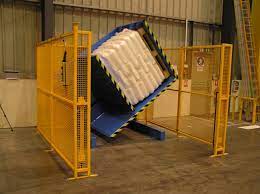
This shift is more than just a simple equipment upgrade. It represents a fundamental change in how Greek businesses approach their operations. They are embracing automation to build more resilient and profitable futures. In this article, I'll use my experience to break down exactly why this change is happening. We will look at safety, finances, product quality, and the modernization of logistics. Let's explore why this machine has become so important for Greece's industrial sector.
How Can Pallet Inverters Reduce Workplace Injuries in Greek Factories?
In any factory, the well-being of your team is paramount. But manual pallet handling is a constant source of risk. Workers have to bend, lift, and twist while moving heavy, awkward loads. This often leads to serious injuries. I have visited many factories where managers worry about their employees' safety and the high cost of workers' compensation claims. These injuries cause pain for the workers and create operational headaches for the business.
Pallet inverters directly address this problem by reducing workplace injuries. They automate the entire process of lifting, turning, and transferring heavy loads. This removes the physical strain from workers. As a result, factories see a dramatic drop in musculoskeletal injuries, like back sprains and shoulder problems. It creates a safer environment for everyone.
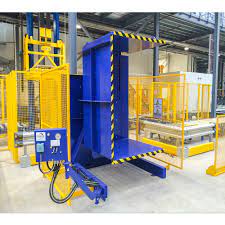
Let's dive deeper into how this simple change can have such a big impact. It's not just about avoiding injuries. It's about building a more stable and motivated workforce. When employees feel safe, they are more productive and more likely to stay with the company long-term. This is a powerful advantage for any Greek manufacturer.
The True Cost of Manual Labor Injuries
Manual handling is one of the biggest causes of workplace injuries in the industrial sector. The most common issues are musculoskeletal disorders (MSDs). These include injuries to the back, shoulders, and wrists. They are not just minor aches. They can lead to chronic pain and long-term disability for an employee. For the company, the costs are huge. There are direct costs, like medical bills and insurance premium hikes. But the indirect costs are often even bigger. These include lost workdays, the cost of hiring and training temporary replacements, and a drop in team morale.
I remember a client in Thessaloniki who ran a food processing plant. They were manually transferring heavy sacks of flour from wooden to plastic pallets. Their rate of back injuries was alarmingly high. Production was constantly interrupted because experienced workers were on sick leave. This is a common story. The physical toll on the human body is immense, and no amount of training can completely eliminate the risk of a person lifting a 20kg box a hundred times a day.
The Mechanical Solution: How Inverters Work
A pallet inverter solves this problem with simple, reliable engineering. The machine uses hydraulic or electric power to do the heavy work. An operator uses a forklift or pallet jack to place the entire loaded pallet into the machine's chamber. The machine then securely clamps the load from the top and bottom. It applies just enough pressure to hold everything steady without causing damage.
Then, the machine rotates the entire load, usually 180 degrees. The pallet that was on the bottom is now on top. The operator can easily remove it. A new pallet is placed on top of the inverted load, and the machine rotates back to its original position. The entire cycle is smooth, controlled, and requires no manual lifting from the employee.
| Feature of Pallet Inverter | Impact on Worker Safety |
|---|---|
| Automated Clamping | Eliminates the need for workers to manually stabilize the load. |
| Controlled Rotation | Prevents sudden shifts or drops that can happen during manual handling. |
| Ground-Level Loading | Reduces lifting and allows for easy access with standard equipment. |
| Emergency Stops & Guards | Provides built-in safety features to protect the operator during use. |
This process doesn't just prevent injuries. It also builds a better safety culture. When employees see that a company is investing in their well-being, it improves trust and loyalty. It sends a clear message: we value our people, not just our output.
What Are the Financial Benefits of Automating Pallet Handling in Greece?
Every business owner, especially in a cyclical industry like manufacturing, thinks about the bottom line. You have to justify every major purchase. The initial cost of new equipment can seem high. Many Greek factory owners I speak with are cautious. They ask, "What is the real return on this investment?" They are under pressure from fluctuating energy prices and market demand, so every euro must be spent wisely.
Automating pallet handling with an inverter delivers clear financial benefits that go far beyond the initial price. The most immediate saving comes from reduced labor costs. You need fewer people to do the same amount of work, and you can reassign those workers to more valuable tasks. But the savings don't stop there. You also see lower insurance premiums due to fewer injuries, a massive reduction in product damage, and faster cycle times that increase your overall throughput.
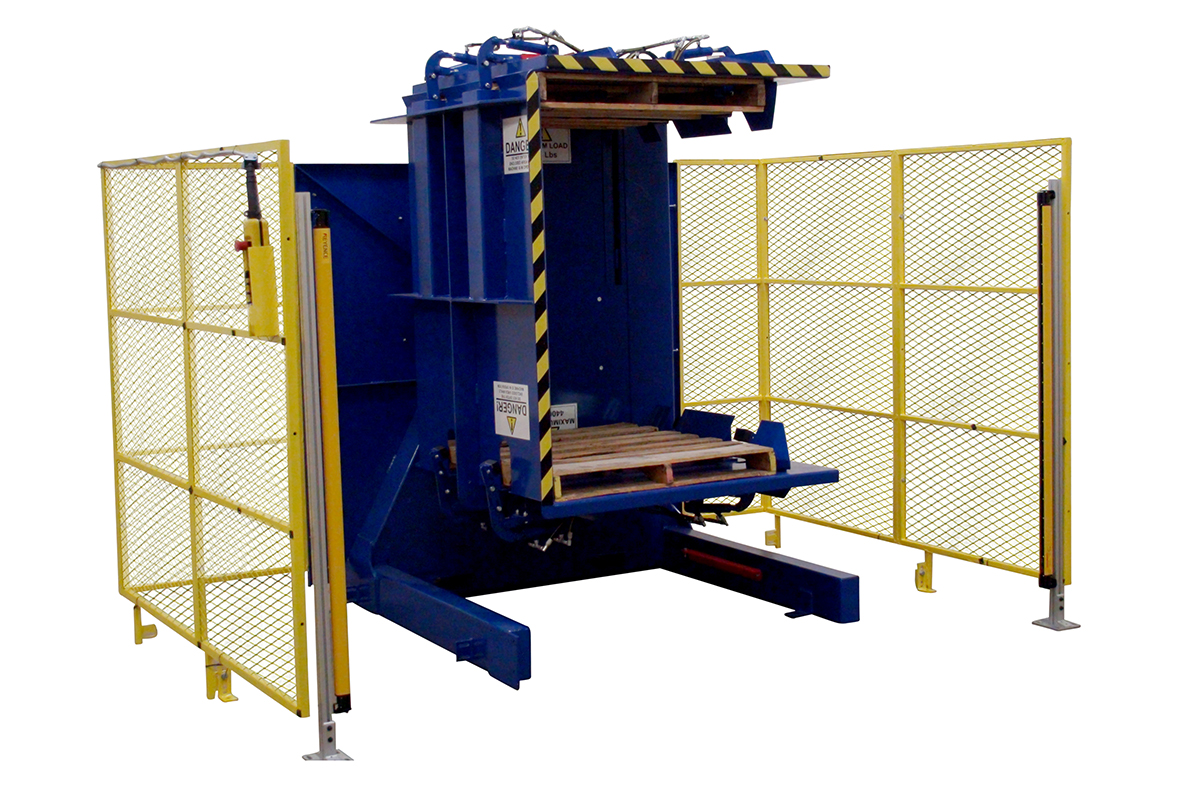
When you add up all these benefits, the pallet inverter pays for itself much faster than you might think. It's a strategic move to lower your operating costs and increase your profit margins. Let's break down the numbers and look at both the direct and indirect savings that Greek manufacturers can expect.
Calculating the Return on Investment (ROI)
When I started my own factory, I had to be very careful with money. It taught me to look at equipment not as a cost, but as an investment that must pay for itself. A pallet inverter is a perfect example of this. Let's consider a typical scenario for a Greek manufacturing facility.
Imagine a factory that manually transfers 50 pallets per day. This requires a team of two workers and takes them a full 8-hour shift. If one worker gets injured, the entire process can shut down. Now, let's install a pallet inverter. A single operator can now transfer those same 50 pallets in just 2-3 hours. The labor savings are immediate. But we need to look deeper.
Here is a simple table showing potential savings.
| Cost Area | Manual Handling (Annual Cost) | With Pallet Inverter (Annual Cost) | Annual Savings |
|---|---|---|---|
| Labor (2 Workers) | €50,000 | €12,500 (1 worker, 1/4 time) | €37,500 |
| Workers' Comp Claims | €5,000 (average) | €500 (reduced risk) | €4,500 |
| Product Damage | €10,000 (2% damage rate) | €1,000 (0.2% damage rate) | €9,000 |
| Total Annual Cost | €65,000 | €14,000 | €51,000 |
If the pallet inverter costs, for example, €40,000, the ROI is clear. The machine pays for itself in less than a year. These are the kinds of numbers a CEO or plant manager needs to see.
Indirect Savings and Long-Term Value
The financial benefits don't stop with the direct savings. There are powerful indirect benefits that contribute to the long-term health of the business. Faster throughput means you can fulfill orders more quickly, improving customer satisfaction. When you ship products on high-quality, standardized pallets, you build a reputation for quality and reliability. This is very important for Greek companies that export to demanding markets in the EU and beyond.
Furthermore, a pallet inverter improves operational flexibility. You can easily switch damaged pallets out of your system. You can transfer goods from wooden pallets to more hygienic plastic pallets for food or pharmaceutical applications. You can consolidate loads to save on shipping costs. Each of these capabilities adds to the bottom line. It transforms a simple operational task into a strategic advantage, helping Greek manufacturers lower their overall costs and boost their competitiveness.
How Do Pallet Inverters Improve Product Quality and Reduce Damage?
Every time a product is damaged, it's a direct loss to your company. You lose the cost of the materials, the labor, and the energy that went into making it. Even worse, it can damage your relationship with your customer. In Greece, where many manufacturers pride themselves on high-quality products like olive oil, wine, or pharmaceuticals, protecting that quality is essential. Manual handling is a major source of product damage. Boxes get dropped, bags get torn, and containers get crushed.
Pallet inverters improve product quality and reduce damage by providing a gentle and secure handling process. The machine clamps the load with even pressure, holding it stable throughout the rotation. There are no sudden jolts, drops, or impacts that are common with manual re-stacking. This controlled motion protects your goods, ensuring they arrive at their destination in perfect condition.
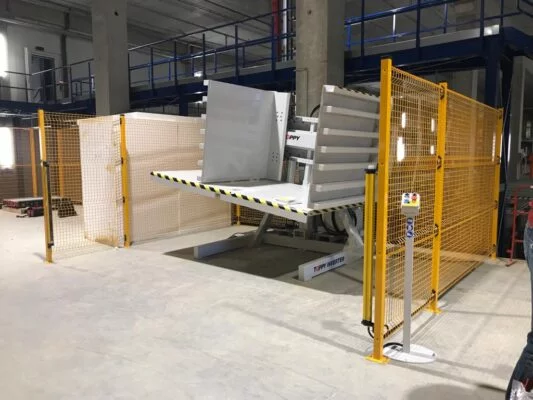
Protecting your product is the same as protecting your profit and your brand's reputation. This is especially true for Greek businesses competing on the world stage. A pallet inverter is a simple tool, but its impact on maintaining the integrity of your goods is significant. Let's look at exactly how it achieves this.
The Science of Secure Load Handling
When a team of workers manually un-stacks a pallet, the load becomes unstable. The center of gravity shifts with every box that is moved. Boxes on the bottom can get crushed by the weight of the ones above them. The risk of dropping a box is high. A pallet inverter eliminates these variables. The entire load is treated as a single, solid block. The clamping system adjusts to the height of the load and applies consistent pressure across the entire surface. This prevents any internal shifting or movement.
The rotation itself is smooth and controlled. This is very different from the jerky movements of manual lifting. For fragile items like glass bottles, electronics, or ceramic tiles, this gentle handling is critical. It prevents the kind of shock and vibration that leads to breakage. It's a matter of physics: by keeping the load contained and moving it smoothly, the forces acting upon the individual items are minimized.
Preserving Quality for Specific Industries
Different industries in Greece face unique challenges. A pallet inverter can be adapted to meet these needs.
-
Food and Beverage: Many Greek food exporters need to transfer their products from standard wooden pallets to hygienic plastic or aluminum pallets to meet international food safety standards (HACCP). A pallet inverter makes this process fast and clean. It avoids contamination that can occur when products are placed on the floor during manual transfer. For a winery in Nemea, this means their bottles of wine are handled with care, preserving the product and the brand.
-
Pharmaceuticals: In the pharmaceutical industry, product integrity is non-negotiable. Pallet inverters allow for sterile transfers in cleanroom environments. They help maintain the strict quality control required for medical products.
-
Building Materials: For manufacturers of tiles, marble, or cement bags, product damage is a major cost. A pallet inverter can handle these heavy, dense loads securely. It prevents chipped tiles and torn bags, which are common problems with manual handling.
| Industry | Manual Handling Problem | Pallet Inverter Solution |
|---|---|---|
| Olive Oil Export | Leaky tins, dented cans from being dropped. | Gentle rotation prevents impact damage. |
| Pharmaceuticals | Risk of contamination from floor contact. | Enables clean transfer to hygienic pallets. |
| Marble/Tile Mfg. | Chipped corners, broken pieces from rough handling. | Secure clamping and smooth motion protect fragile edges. |
By investing in this technology, Greek manufacturers are making a clear statement. They are committed to delivering the highest quality products to their customers, every single time.
What Role Do Pallet Inverters Play in Modernizing Greek Logistics?
Logistics is no longer just about moving boxes from point A to point B. It's the backbone of modern commerce. A slow or inefficient logistics chain creates bottlenecks that can cripple a business. Greek manufacturers are competing in a fast-paced global market. They need their logistics to be quick, flexible, and intelligent. Old, labor-intensive methods simply cannot keep up.
Pallet inverters play a central role in modernizing Greek logistics by acting as a key bridge in the automation chain. They streamline the flow of goods from production to storage to shipping. They allow companies to easily manage different pallet types, integrate with other automated systems like conveyors and AGVs, and improve overall warehouse efficiency. They are a foundational piece of equipment for building a smart, responsive supply chain.
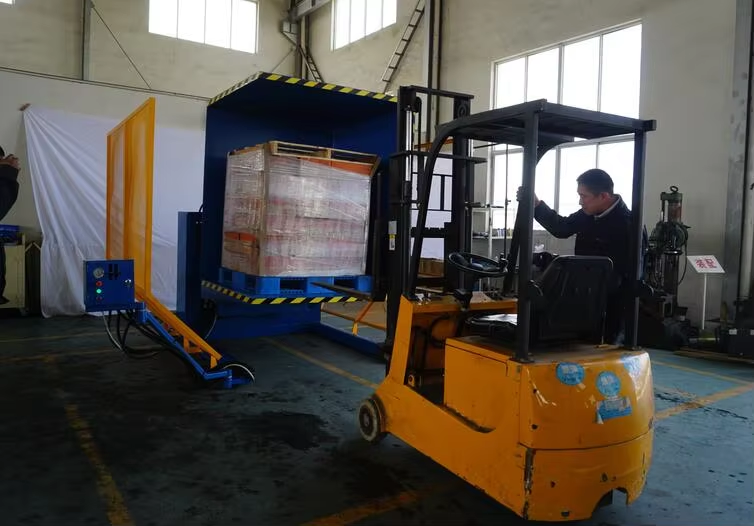
This is about more than just speed. It's about creating a more connected and data-driven operation. For a forward-thinking CEO, a pallet inverter is not just a machine. It's a tool that helps them achieve greater visibility and control over their entire production process. It is a step towards the "smart factory" of the future.
Integrating with the Modern Warehouse
A modern warehouse or factory floor is an ecosystem of connected technologies. A pallet inverter fits perfectly into this system. It can be placed at key transition points in your facility.
- At the Receiving Dock: Goods often arrive from suppliers on low-quality or non-standard pallets. A pallet inverter allows you to immediately transfer these goods to your own high-quality, internal pallets. This prevents poor quality pallets from entering your warehouse, where they can break and damage automated conveyor or racking systems.
- In the Production Line: You can use an inverter to switch pallets as a product moves from one stage of production to another. For example, moving from a production pallet to a heat-treatment pallet.
- At the Shipping Dock: This is a critical point. You need to ship goods on pallets that meet your customer's specific requirements or international standards (like ISPM 15 for wood pallets). An inverter lets you make this switch quickly just before loading, ensuring compliance and customer satisfaction.
| Process Flow | Role of the Pallet Inverter | Benefit for Greek Logistics |
|---|---|---|
| Goods Inbound | Transfer from supplier pallet to house pallet. | Protects internal automation systems. |
| Quality Control | Invert load to inspect bottom layers for damage. | Improves quality assurance without manual work. |
| Goods Outbound | Transfer from house pallet to shipping pallet. | Ensures compliance with customer/export rules. |
A Gateway to Industry 4.0
The most forward-thinking leaders are pushing for digital transformation. They want data from every part of their operation. A modern pallet inverter can be equipped with sensors and connected to a larger Manufacturing Execution System (MES) or Warehouse Management System (WMS). This is where it becomes a truly "smart" device.
The inverter can automatically log every pallet transfer, providing real-time inventory updates. Sensors can track cycle times, helping you identify and eliminate bottlenecks. They can also monitor the machine's health and predict when maintenance is needed. This prevents unexpected downtime. This kind of data is invaluable. It helps a factory owner in Greece make smarter decisions, optimize their entire supply chain, and achieve goals like 95% equipment uptime and reduced operational costs. It’s a practical step that connects the physical factory floor to the digital management system.
Conclusion
Investing in pallet inverters is a strategic move for Greek manufacturers. It is a direct path to a safer, more efficient, and more profitable operation that is ready for future challenges.


